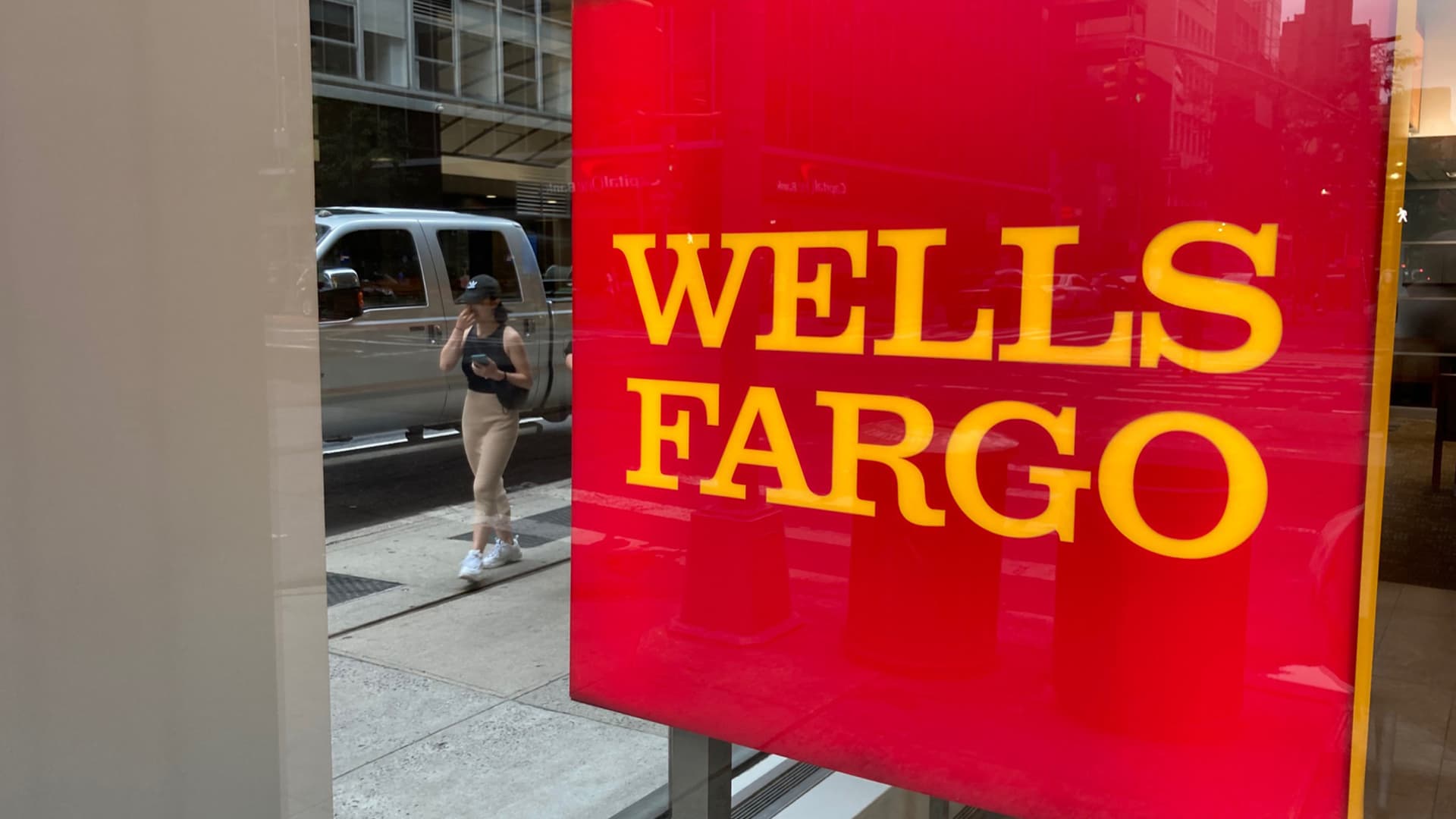
Wells Fargo signage on May 5th, 2021 in New York City.
Bill Tompkins | Michael Ochs Archives | Getty Images
Wells Fargo on Thursday reported lower-than-expected first-quarter revenue amid a drop in mortgage lending, but beat earnings expectations as the bank decreased its credit reserves.
Wells Fargo shares lost 3% in premarket trading.
Here are the numbers:
- Earnings: 88 cents a share, higher than the 80 cents a share estimate from Refinitiv.
- Revenue: $17.59 billion vs. $17.8 billion estimate.
The bank’s first-quarter results were helped by a decrease of $1.1 billion in the first quarter in the allowances for credit losses.
Wells Fargo reported home lending fell 33% from the year prior on lower originations and lower gain on sale margins as mortgage rates have climbed. The Federal Reserve hikes interest rates to fight inflation.
“Our internal indicators continue to point towards the strength of our customers’ financial position, but the Federal Reserve has made it clear that it will take actions necessary to reduce inflation and this will certainly reduce economic growth,” CEO Charlie Scharf said in a statement.
The results also come as Russia’s invasion of Ukraine has injected volatility into financial markets and raises concerns about global economic growth.
“In addition, the war in Ukraine adds additional risk to the downside,” Scharf added.
Unlike big bank peers with its sizeable Wall Street divisions, Wells Fargo is more focused on U.S. retail and commercial banking customers. Wall Street analysts expect Wells Fargo to be among the biggest beneficiaries of rising interest rates and a rebound in loan growth, forces that should boost the interest income it collects.
Wells Fargo posted net interest income of $9.2 billion, roughly in line with the StreetAccount consensus estimate and about 5% higher than the year prior. Net interest income is the revenue from the bank’s interest-bearing assets like loans and mortgages, minus what the bank pays out on deposits like savings accounts.
The bank decreased its allowance for credit losses citing “reduced uncertainty around the economic impact of the COVID-19 pandemic on our loan portfolios, as well as a decrease in net charge-offs,” according to the press release.
Wells Fargo’s credit reserves reduction contrasts the moves of rivals like JPMorgan Chase. JPMorgan on Wednesday said it took a $902 million charge for building credit reserves for anticipated loan losses.
However, Wells Fargo warned more loan losses could be on the horizon.
“While we will likely see an increase in credit losses from historical lows, we should be a net beneficiary as we will benefit from rising rates, we have a strong capital position, and our lower expense base creates greater margins from which to invest,” Scharf said.
Shares of Wells Fargo are up about 1% this year, the best showing among the six biggest U.S. banks, most of which have posted double-digit declines. For instance, JPMorgan shares have declined more than 19% this year.
Led by Scharf since October 2019, Wells Fargo is still operating under a series of consent orders tied to its 2016 fake accounts scandal, including one from the Fed that caps its asset growth. Analysts will be keen to hear from Scharf about any progress being made to resolve those orders.
Rival banks Goldman Sachs, Citigroup and Morgan Stanley also report quarterly results Thursday.
(Correction: An earlier version of the story incorrectly stated the bank had set aside more money for credit losses in the first quarter. The bank decreased its allowance for credit losses by $1.1 billion in the quarter.)







